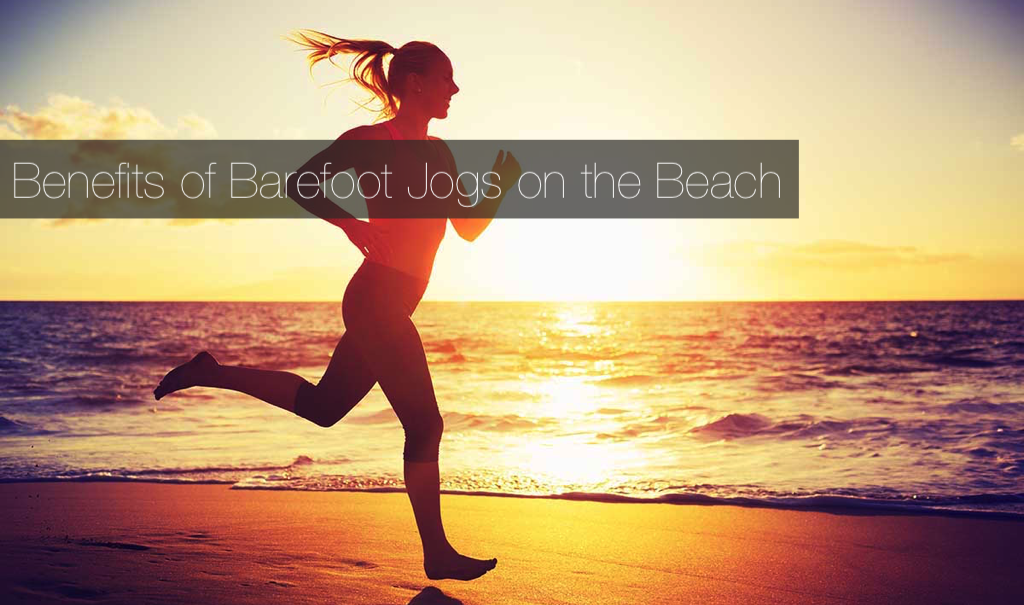
In our recent article about summer activities that will help with your physiotherapy, we named barefoot beach running among them. There’s no doubt that we live in a great place for such an exercise, especially if you head on over to the likes of Spanish Banks, White Rock, or Centennial Beach at low tide. However, you rarely see local runners/joggers taking advantage of the natural bounty of saltwater coastline in the area. We can’t help but think that this is because of the uncertainty over whether or not the activity can cause more harm than good. After all, there are many conflicting articles on the topic. Today, we’re going to take a look at the benefits of running sans shoes along the sands, while concluding with a small word of caution for some.
4 Big Benefits of Jogging Barefoot on the Beach
1. Forces Small Stabilizer Muscles to Work
Stabilizer muscles in the legs aren’t for show. Random people on the beach won’t stop you to admire and comment on them the way they may for your calves or hamstrings (perhaps that’s a good thing). And while working them won’t give you the satisfying burn you feel when working large leg muscles they play a vital role in their health and strength, bearing the responsibility for holding everything in place while your body is moving. In fact, it’s when stabilizer muscles are weak compared to the rest of your lower anatomy that the risk of injury exponentially increases. One of the most relevant (to this conversation) stabilizer muscles is the hip stabilizer, otherwise known as the gluteus medius, which boasts the task for maintaining proper biomechanical function of the lower body during running/jogging in order to prevent injuries at the hip, knee, and ankle.
When running along the beach, you’re on a relatively uneven surface, which forces you to engage the stabilizing muscles (gluteus medius included) which gives them a workout they won’t get when on flat track or concrete. Over time they will strengthen to the point that they are proportionately equal to the big movers (calves, hamstrings, etc.) and can help you avoid injury while enhancing your performance on and off the sand.
2. Improves Balance
As your stabilizer muscles strengthen, your balance will naturally improve. In addition, running on an uneven surface without the support of running shoes will better activate the mind-body connection, deepening your awareness of the muscle groups that must be activated to support the twists and inversions, improving your balance in time. It may be a tricky experience in the beginning, but you’ll soon notice a refinement in your form after a few runs.
3. Burns More Calories
While the number of calories burned will vary upon depth, moisture, and looseness of the sand, studies show that the average number of calories burned varies anywhere between 1.5 to 2-times greater than when running on a flat surface in running shoes. This difference is the result of the fact that each movement (when beach running) requires more effort to complete than the latter. When all else is equal, burned calories can equate leaner muscle mass which can reduce your overall risk of injury in other activities.
4. Allows a More Optimal Footstrike
There is a lot of debate on running form and footstrike, which references how and where your foot hits the ground. If you tend to land on your heels when running, you force-stop your forward momentum and cause undue stress on your knees. If you tend to land on your toes, you force your calves to do too most of the work, which can lead to shin splints and more.
Both of types of footstrikes are common for those jogging on flat surfaces while wearing typical (without orthotics) running shoes, but when you run barefoot on the sand, you can’t help but land more towards the forefoot or mid-foot, which will keep your strides more smooth, light and flowing. Landing on the forefoot or mid-foot also allows your arches to act as natural shock absorbers, which is a more efficient manner of running. When combining barefoot beach jogging with your normal running regime, you mix up your footstrike which can strengthen all foot muscles, joints, and ligaments.
Conclusion and Caution
Barefoot beach jogging can be great for those in good physical health. However, if you are recovering from or currently living with an injury, the uneven surface and unknown variables (beach debris underfoot, etc.) can set the table to aggravate or reaggravate a condition. Before you make this activity a part of your normal summertime (and beyond) exercise regime, receive a gait analysis from a physiotherapy clinic near you to find out if you have any faulty foot mechanics that need to be addressed. Once in the clear, you can indeed reap the benefits of running on the beach.
